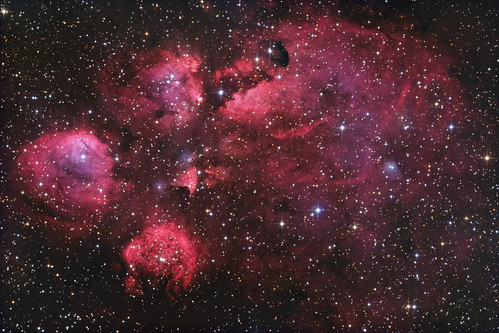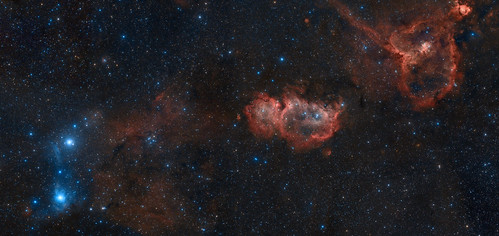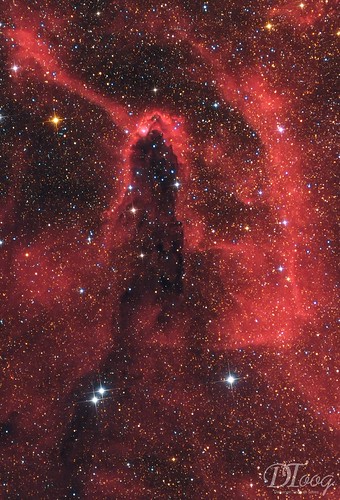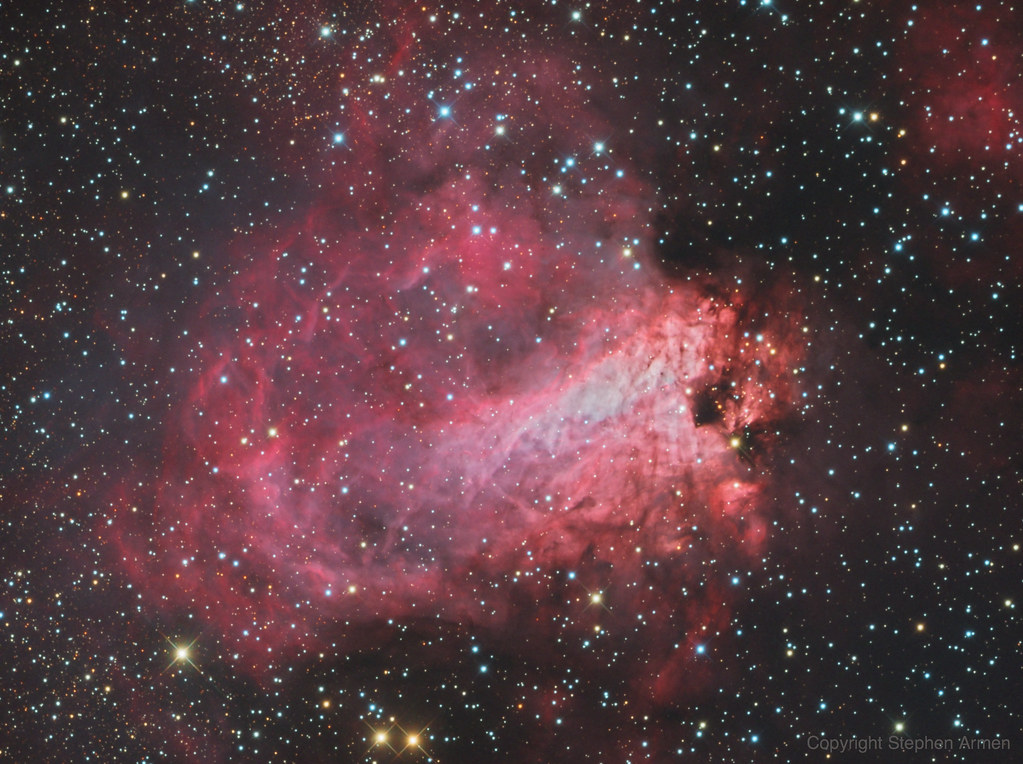NGC 6334 - The Cats Paw Nebula
In 1837, John Herschel discovered NGC 6334, or perhaps better known by its common name, The Cats Paw Nebula. It’s an emission nebula located in the constellation Scorpius. Its distance to Earth is 5,500 light years
I wanted to try something a little different with the data set that I have collected over the years on this object. In the RGB colour space, this object can be a little overwhelming with its strong reds. (note: just my personal tastes coming through) The strong reds result from the hydrogen rich areas that completely conceal many hot young stars deep within the nebula. In many cases, these stars are 10 times heavier that our sun and emit massive amounts of ultraviolet light. The surrounding hydrogen gas absorbs this light, which is then re-emitted as a deep red seen in most photos of this object.
It should be noted that this area is one of the most active stellar nurseries of massive stars in our galaxy.
Luminance, Red, Green, and Blue filters where used to create the base of the image. Narrowband channels consisting of Ha, SII, and OIII where added as support data to enhance textures and highlight many areas within this large gas complex.
While the colours may not truly represent the typical RGB colour image, it does highlight many interesting features within. I like the area that looks like a miniature version of the “Running Man Nebula” found near Orion. This can be located just above the area that looks like a shark fin (or Star Fleet Icon), just left from the centre part of the image. It has a slight bluish colour like a reflection nebula. (Zoom in to 100 percent)
Field of View / Plate Solving
Center (RA, Dec):(259.955, -35.874)
Center (RA, hms):17h 19m 49.220s
Center (Dec, dms):-35° 52' 27.816"
Size: 52.4 x 34.9 arcmin
Radius: 0.525 deg
Pixel scale:0.804 arcsec/pixel
Orientation: Up is 314 degrees E of N
Exposure Details:
Lum 75X900
Red 30X450
Green 23X450
Blue 24X450
Ha 19X1800
SII 23X1800
OIII 34X1800
Total time 66.4 hours
Instruments Used:
10 Inch RCOS fl 9.1
Astro Physics AP-900 Mount
SBIG STL 11000m
FLI Filter Wheel
Astrodon Lum, Red, Green, Blue Filters
Baader Planetarium H-alpha, SII, OIII Narrowband-Filters
Software Used
CCDStack (calibration, alignment, data rejection, stacking)
Photoshop CS 6 (Image processing)
Thanks for looking
Astrobin link below

Flickr link below
 NGC 6334 - The Cats Paw Nebula
NGC 6334 - The Cats Paw Nebula by
Terry Robison, on Flickr










